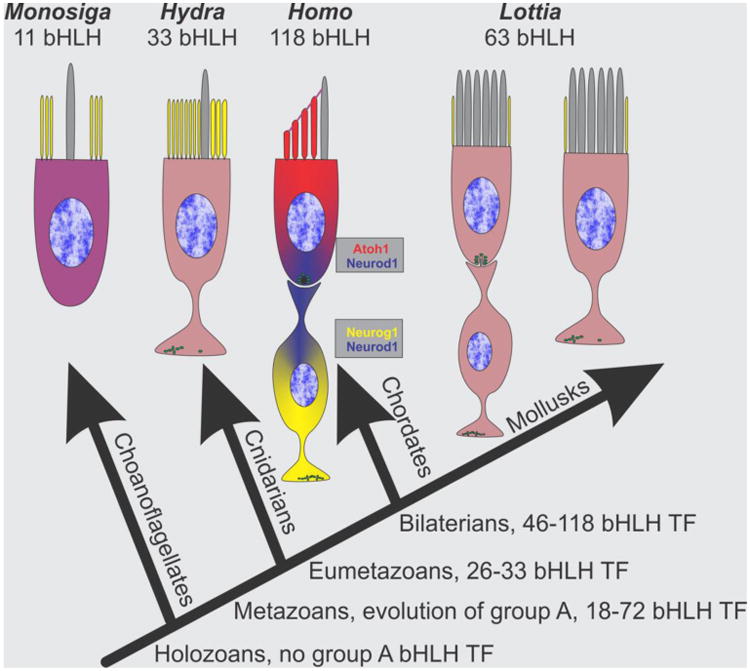Fig. 2.

Available data on basic helix-loop-helix transcription factors (bHLH TFs) relevant for the evolution of human hair cells and sensory neurons are shown. Note that Monosiga has 11 bHLH TFs, none of which are orthologous to Metazoans. Eumetazoans have sensory cells with axons and display asymmetric distribution of microvilli (yellow) and kinocilium (gray). In mammals, the three bHLH TFs are partially overlapping to drive neuronal (Neurog1, Neurod1) and hair cell (Atoh1, Neurod1) development. A superficially similar arrangement of sensory cells and sensory neurons is found in some mollusks but which bHLH genes are expressed in these cells is unknown. Given the distribution in protostomes and deuterostomes, mollusk and vertebrates sensory cell evolution without an axon likely indicates functional conservation. Modified after (Pan, et al., 2012).
